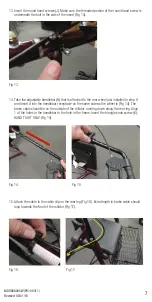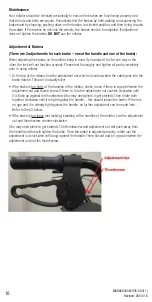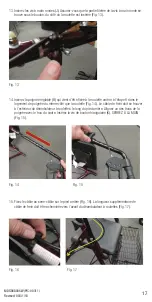
MDS86800XW (PIC-00311)
Revised: 08/31/18
10
Maintenance
Your rollator should be checked periodically to ensure the brakes are functioning properly and
that all nuts and bolts are secure. Periodically test the brakes by both walking and squeezing the
brakes and by stopping, pushing down on the brakes to a locked position, and then trying to push
the walker. If the brakes do not lock the wheels, the brakes need to be adjusted. If adjustment
does not tighten the brakes,
DO NOT
use the rollator.
Adjustment of Brakes:
(There are 2 adjustments for each brake – one at the handle and one at the brake):
When adjusting the brakes on the rollator, keep in mind if you adjust it too far one way or the
other, the lock will not function properly. Please test thoroughly and tighten all parts completely
prior to using rollator.
1. At the top of the rollator, find the adjustment nut which is located where the cable goes into the
brake handle. This part is usually silver.
• If the brake is too tight, at the handles of the rollator, check to see if there is a gap between the
adjustment nut and thumb screw. If there is, turn the adjustment nut counter-clockwise until
it is flush up against the thumbscrew (You may need pliers to get started). Then rotate both
together clockwise until it is tight against the handle…this should loosen the brake. IF there is
no gap and it is already tight against the handle, no further adjustment can be made here…
Refer to Step 3 below.
• If the brake is too loose (not locking), standing at the handles of the rollator, turn the adjustment
nut and thumbscrew counter-clockwise.
(You may need pliers to get started). The thumbscrew and adjustment nut will push away from
the handle and this will tighten the brake. Once the brake is adjusted properly, rotate just the
adjustment nut clockwise until snug against the handle. There should now be a gap between the
adjustment nut and the thumbscrew.











































